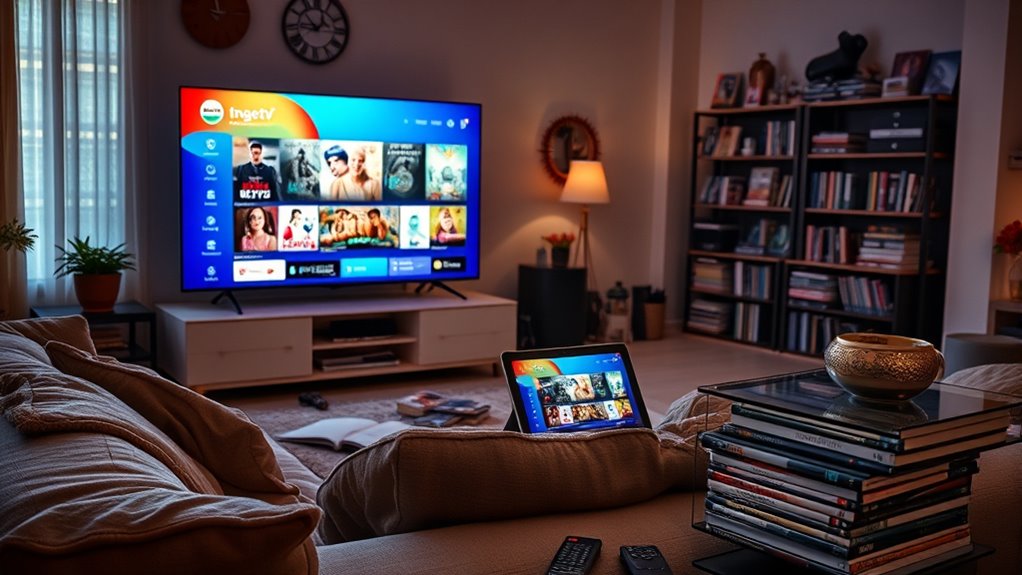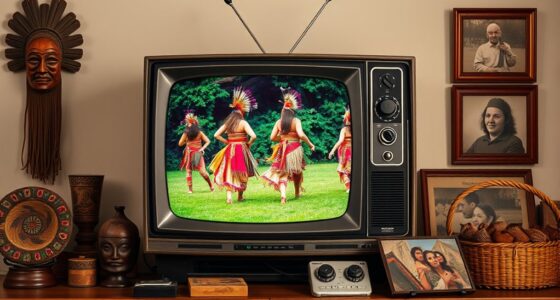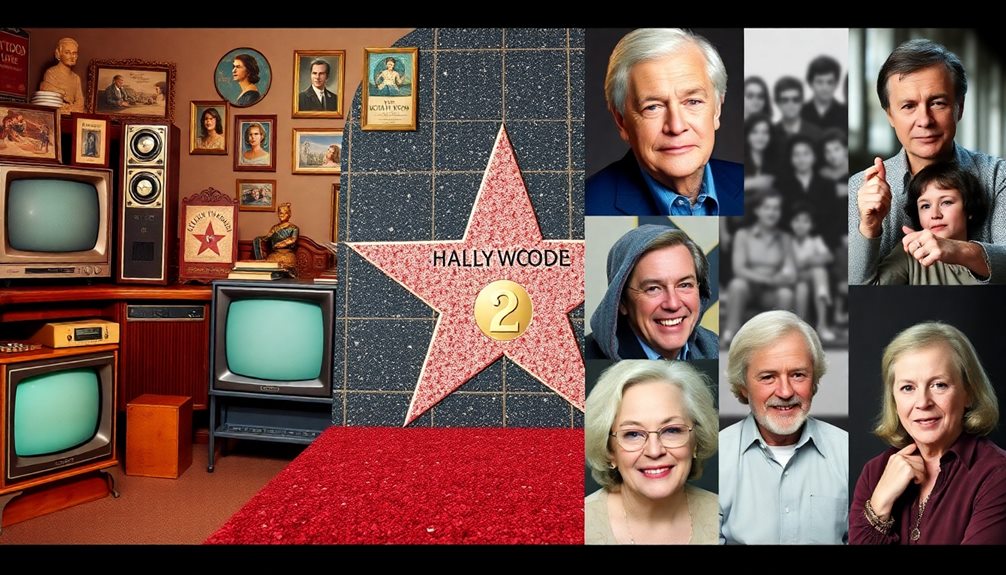Streaming has drastically changed how TV seasons and schedules work. Instead of waiting weekly, you can now binge entire seasons instantly or enjoy hybrid release styles. This shift means you get more control over when and how you watch, but it also reduces the shared viewing experience and ongoing social buzz. If you want to understand how these changes affect viewer engagement and storytelling, there’s more to uncover below.
Key Takeaways
- Streaming platforms enable full-season releases, shifting away from traditional weekly episode schedules.
- Binge-watching facilitated by instant access alters traditional viewer engagement and suspense-building.
- Release strategies now include full drops, weekly episodes, or hybrids to balance immediacy and anticipation.
- Audience discussions are less synchronized due to varied viewing paces, affecting social media engagement.
- Content storytelling and marketing are adapting to shorter, more intense consumption cycles.

Streaming platforms have revolutionized the way TV shows are released and scheduled, giving viewers unprecedented flexibility. No longer do you have to wait week after week for a new episode; instead, you can immerse yourself in entire seasons at your own pace. This shift has dramatically changed viewing habits, especially when it comes to episode bingeing. With the ability to access full seasons instantly, you’re more likely to watch multiple episodes in a single sitting, creating a different kind of engagement compared to traditional weekly releases. This binge-watching culture influences how studios approach release strategies, often opting to drop entire seasons at once to cater to your desire for immediate gratification. Additionally, this change impacts viewing habits, altering how audiences consume and discuss TV content. Because of this, the concept of suspense and anticipation has evolved. Traditional schedules built excitement over weeks, with cliffhangers and weekly cliffhangers keeping viewers hooked. Now, with complete seasons available upfront, the focus shifts from anticipation to instant gratification. You might finish a season in a weekend, which can lessen the momentum of weekly conversations and social media buzz. Still, some streaming services experiment with hybrid approaches—releasing episodes weekly to maintain ongoing engagement while still giving you the option to plunge in later. These release strategies are designed to balance the benefits of bingeing with the desire for sustained interest over time. You’re also impacted by these new release models when it comes to discussions and community engagement. Watching an entire season in one go means fewer people are at the same point in the story at the same time, which can dampen the communal experience that weekly releases fostered. On the other hand, bingeing allows you to immerse yourself fully without waiting, making it easier to pick up on details and plot twists without interruption. The flexibility of on-demand viewing means you can tailor your experience, whether you prefer to savor episodes slowly or consume them all at once.
Frequently Asked Questions
How Do Streaming Releases Impact Traditional TV Ratings?
Streaming releases can lead to viewership fluctuations for traditional TV, as audiences may shift to binge-watch on-demand. This change impacts overall ratings and makes it harder for networks to predict audience sizes. Consequently, advertisers adjust their strategies, often reducing ad spend or seeking new ways to target viewers. You might notice a decline in TV ratings, but streaming opens opportunities for more personalized and flexible advertising strategies.
Are There Differences in Season Lengths Between Streaming and Traditional TV?
Imagine seasons as flowing rivers—streaming episodes often stretch longer, like a wide, winding stream, with episode lengths that vary more than traditional TV’s steady rapids. You notice streaming shows release seasons less frequently, like gentle trickles, compared to traditional TV’s more regular, predictable flow. This difference allows for longer episodes and variable season lengths, giving creators flexibility, but also changing how you experience the story’s journey.
How Does Binge-Watching Influence Viewer Engagement?
Binge-watching boosts your viewer motivation by offering immersive storytelling, making it easier to stay engaged. However, it can also lead to binge fatigue, causing you to lose interest or feel overwhelmed. This cycle influences how you consume content, often encouraging longer viewing sessions but risking burnout. To maintain enjoyment, it’s important to pace yourself, balancing binge-watching with breaks to avoid fatigue and keep your engagement high.
What Are the Global Effects of Streaming on TV Scheduling?
Thanks to streaming, you now experience global consumption patterns that erase borders—your favorite show might debut in Tokyo, then in London, all at once. You get to enjoy cultural adaptation in storytelling, making content more diverse and relatable. This worldwide access reshapes TV scheduling, turning it into a chaotic, yet exciting, global carnival where schedules no longer matter. Welcome to the age where borders are blurred, and binge-watching is king.
Will Traditional TV Networks Adopt New Scheduling Strategies?
Yes, traditional TV networks are likely to adopt new scheduling strategies. You’ll see more network flexibility as they experiment with on-demand and binge-release models to attract viewers. They’ll also modify advertising models, shifting towards targeted ads and shorter commercial breaks to stay competitive amid streaming. This evolution helps networks stay relevant, offering viewers the convenience they want while balancing advertising revenue in a changing media landscape.
Conclusion
Streaming changes how you watch, when you watch, and what you watch. It offers flexibility, breaks traditional schedules, and puts control in your hands. It transforms the way you experience TV—on your terms, at your pace, whenever you want. Embrace the new era of entertainment—where you choose, where you pause, and where you finish. Streaming isn’t just changing TV; it’s reshaping your entire viewing experience.









